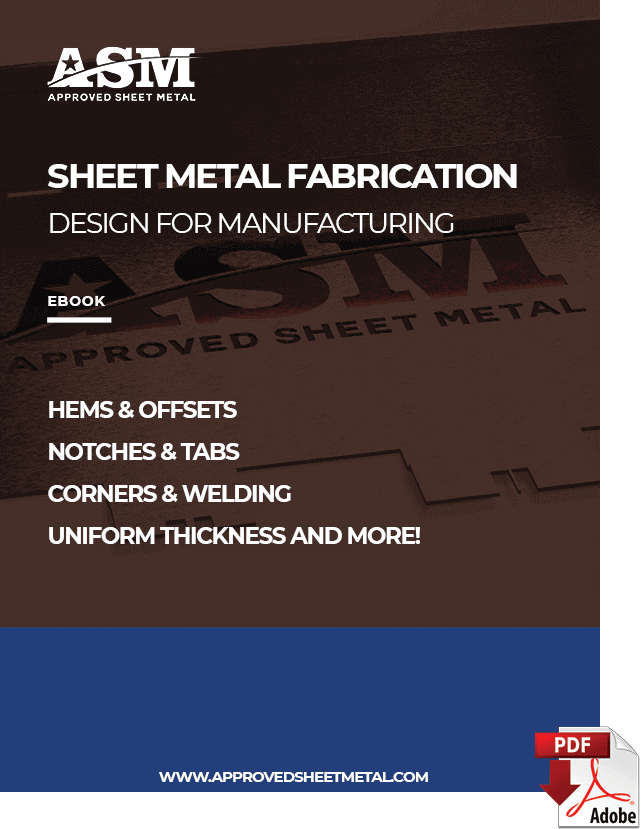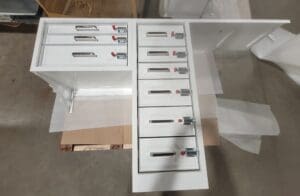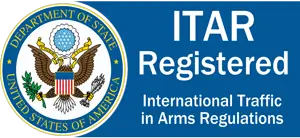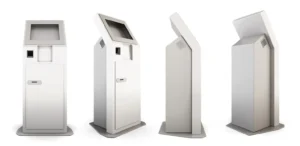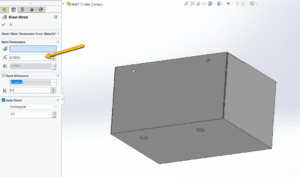Last updated on May 16th, 2024 at 10:21 am
Did you know that Approved Sheet Metal offers design reviews?
Until now, we’ve primarily offered this service upon customer request or in response to custom metal fabrication orders with specifications we’ve flagged as potentially difficult, expensive, or time-consuming to achieve.
Although our design review offering has been somewhat of a “secret service” in the past, our customers have appreciated it so much that now we’re shouting it from the rooftops!
If you’re concerned about potential weaknesses in your design—or simply want the peace of mind of knowing your design has been vetted by our expert team before sheet metal fabrication begins—we’re happy to collaborate with you through our review process.
Table of Contents
- 1 4 Factors We Evaluate in a Sheet Metal Fabrication Design Review
- 2 Quick Tips for Optimizing Custom Metal Fabrication Designs
- 3 Trust Approved Sheet Metal for Expert Design Reviews
- 4 Sheet Metal Design for Manufacturing
- 5 Sheet Metal Fabrication Design Review FAQ
- 5.0.1 What factors are evaluated during a sheet metal fabrication design review?
- 5.0.2 How can design modifications optimize custom metal fabrication?
- 5.0.3 How does the review process impact the overall fabrication process?
- 5.0.4 What does Approved Sheet Metal's design review service entail?
- 5.0.5 Why trust Approved Sheet Metal for design reviews?
4 Factors We Evaluate in a Sheet Metal Fabrication Design Review
We begin the design review by addressing any specific concerns you have about your design. Then, we set out to answer these four questions:
1. Is the part formable?
First, we determine if we can use sheet metal forming to create the part from a single sheet or if we’ll need to cut multiple pieces and join them together.
2. Is welding required?
Welding is the most time-consuming joining method, so we like to use alternative solutions like hardware, rivets, or a combination of fasteners and spot welding when possible. We’ll assess your design to see if we can minimize welding or avoid it altogether.
3. What finish is needed?
If we determine that welding is necessary, the next step is to get on the same page about the welding finish. Demo parts, for instance, must have a superior cosmetic appearance, so we’ll recommend a Class A weld. For internal parts that won’t be seen, we’ll likely suggest a Class C weld, which is the fastest and most economical option.
Other finishing needs can also have wide-ranging effects on your cost and lead time. In our review, we may recommend a different finish than the one you’ve called out depending on factors such as volume, application, and desired turnaround.
For instance, if a customer requests an anodized finish for their aluminum parts but needs the order right away, we may urge them to consider black powder coat instead because we can powder coat parts quickly in-house.
4. Is the material standard?
Finally, we determine if the material called out in your drawing is a standard type and thickness. If it isn’t, we may recommend choosing a readily available alternative that’s easier to source. This will ensure that any custom metal fabrication shop can easily manufacture the part as needed.
Quick Tips for Optimizing Custom Metal Fabrication Designs
Whether or not you take advantage of our design review service, there are a few key ways to optimize your designs for quick and cost-effective sheet metal fabrication:
1. When possible, design to avoid welding
Fastening solutions such as hardware and riveted construction are far more efficient than welding, particularly for large orders. There’s a reason you never see welding on mass-produced parts!
A good analogy is typing versus writing by hand. When writing a few sentences (which is akin to prototyping), either method will do. However, when writing a book (which is akin to mass production), typing is the obvious choice for completing your project faster.
2. Design large parts in multiple pieces
When forming large boxes or U-shaped parts, joining pieces together usually results in greater integrity than forming the parts from a single sheet of metal.
3. Choose material thicknesses wisely
Materials in standard thicknesses are generally easier to source now and in the long term. And if your part doesn’t require welding, you can typically save money by going down a thickness.
Trust Approved Sheet Metal for Expert Design Reviews
Because we fulfill such a wide range of orders day in and day out, we can quickly identify opportunities for slight design modifications that improve the quality of a part and yield notable time and cost savings.
Particularly in the prototype phase, a design review from Approved Sheet Metal can set you up for success from prototyping through long-term production.
Request a quote today to get started on your project.
Sheet Metal Fabrication Design Review FAQ
We focus on assessing if the part is formable from a single sheet or requires multiple pieces, minimizing welding needs, determining appropriate finishing for cosmetic or structural purposes, and ensuring the chosen material aligns with standard types and thicknesses.
Designing to avoid excessive welding, breaking down large parts into multiple pieces, and choosing standard material thicknesses can significantly enhance efficiency and cost-effectiveness in sheet metal fabrication. These strategies also promote quicker turnaround times.
Our design reviews, whether for prototypes or long-term production, aim to optimize designs for efficiency and cost-effectiveness. By addressing potential weaknesses upfront, we enhance the overall quality of parts and streamline the fabrication process.
Our design review service assesses potential weaknesses in your sheet metal fabrication design. We evaluate four key factors: formability, welding requirements, necessary finishes, and material standards, providing expert insights to optimize your design.
With extensive experience fulfilling diverse orders, our team swiftly identifies design modifications that enhance part quality while saving time and costs. Our design reviews, especially during the prototype phase, set the stage for successful production.

